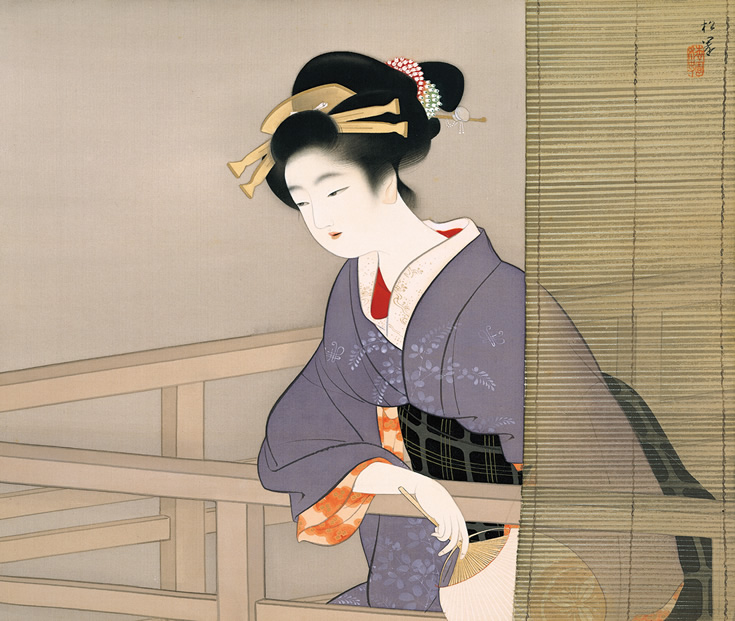niponica is a web magazine that introduces modern Japan to people all over the world.
2018 NO.23
Style in Japan

Keywords for Understanding Japanese Artistic Sensibilities
When they want to dress up, the Japanese tend to be guided by their deeply intuitive aesthetic tastes. These sensibilities have been passed down from one generation to the next, expressing what is beautiful and important in appearance.
優美 yuubi

Delicate, graceful beauty. Modest, yet dynamic in form and movement. Ready to adapt with optimism as things change.
Kyo Bijin no Zu (“Kyoto Beauty”), by Uemura Shoen, done sometime between 1932 and 1935. The kimono-clad woman with the uchiwa fan in her hand gives us a good idea about the changes of the season. (Property of Yamatane Corporation)
壮麗 sourei

Elegantly dignified. Behind the gorgeous, ornate look lie true sophistication and refinement.
The colorful embroidery brings radiant beauty to a kimono, a type of traditional Japanese clothing. (Model: Kinari; Photo: Shimozono Keisuke, courtesy of DE & Co. and The Kimono Shop)
雅 miyabi

Tasteful, intuitively refined. A sensitivity that combines attention to detail with exquisite taste, exhibiting subtlety and an artistic atmosphere.
Takabatake Kasho’s Utsuri-yuku Sugata (“Changes in Fashion"), 1935. (Illustration courtesy of The Yayoi Museum). This screen shows women in four seasons from the late 19th century to the early 20th century. Here we see women’s fall and winter apparel.
繊細 sensai

Skillfully thought out, detailed, ephemeral. Paying careful attention to subtleties that might not be noticed at first sight, while exhibiting a sophistication that combines small elements to make a complete look.
Hana kanzashi are hairpins decorated with flowers of the seasons. Their shapes delicately express the charm of changing scenes in nature. (Photo: Nomura Seiji; top kanzashi property of Kinchikudo; lower kanzashi property of The Kushikanzashi Museum)



